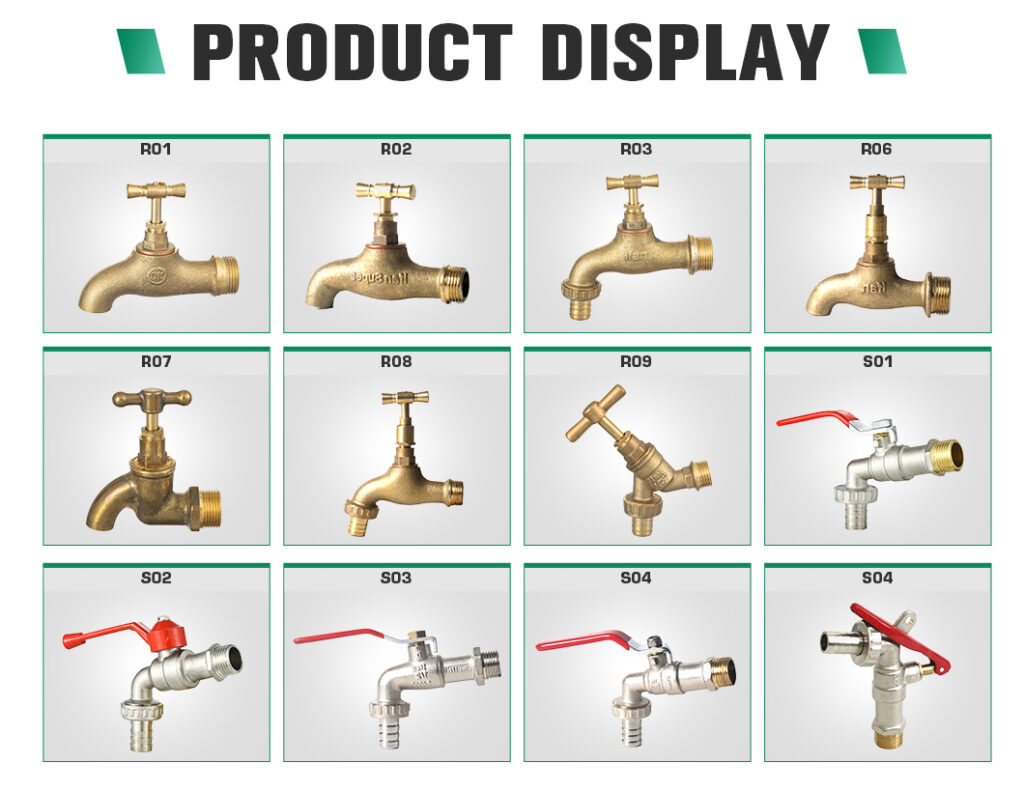A brass bibcock, also known as a brass ball valve, is a type of plumbing valve used to control the flow of water. It is commonly made of brass, a material that is known for its durability, resistance to corrosion, and ability to withstand high temperatures. The brass bibcock is widely used in households, commercial buildings, and industrial facilities due to its reliable performance and long service life. This is our Facebook Website:www.facebook.com,IFAN factory has 30+ years manufacture experience supporting color /size customization support Free Samples.
Structure
A typical brass bibcock consists of a body, a ball, a stem, a handle, and a gland. The body is the main part of the bibcock and makes of brass. It houses the ball and stem assembly, which controls the flow of water. The ball is a spherical-shaped component that sits inside the body and rotates to allow or stop the flow of water. The stem is a cylindrical-shaped rod that connects the ball to the handle. The handle is used to turn the stem and ball to control the flow of water. The gland is a sealing component that prevents leaks by compressing against the stem.
Material
Brass bibcocks are made of brass, which is an alloy of copper and zinc. The proportion of copper and zinc varies depending on the application and the desired properties of the brass. The brass used in bibcocks is typically high-quality brass with a high copper content, which provides excellent resistance to corrosion and wear. Some brass bibcocks may also have chrome or nickel plating, which enhances their appearance and provides additional protection against corrosion.

Usage
Brass bibcocks are commonly used in plumbing applications where a reliable and durable valve is needed to control the flow of water. They are often used in outdoor areas such as gardens, patios, and washing areas, as well as indoor areas such as kitchens, bathrooms, and laundry rooms. They are also used in commercial and industrial applications such as factories, warehouses, and hospitals.
Place of Use of Brass Bibcock
Brass bibcocks can use in a variety of locations, including indoor and outdoor areas. They commonly use in outdoor areas where water needs to be controlled, such as gardens, patios, and washing areas. Indoor areas where brass bibcocks are commonly used include kitchens, bathrooms, and laundry rooms. They are also used in commercial and industrial settings, such as factories, warehouses, and hospitals.
Installation of Brass Bibcock
Installing a brass bibcock is a relatively simple process that can be done by a plumber or a DIY enthusiast with some basic plumbing skills. The following are the steps involved in installing a brass bibcock:
- Turn off the water supply: Before installing the bibcock, turn off the water supply to the area where it will be installed.
- Prepare the installation site: Choose a suitable location for the bibcock and prepare the installation site by drilling a hole in the wall or mounting surface.
- Install the bibcock: Insert the bibcock through the mounting surface and secure it in place using the appropriate screws or bolts.
- Connect the plumbing: Connect the plumbing to the bibcock using the appropriate fittings and sealants.
- Test the installation: Turn on the water supply and test the installation for leaks and proper operation.
Conclusion
Brass bibcocks widely use in plumbing applications due to their durability, reliability, and long service life. They commonly make of brass, a material known for its resistance to corrosion and high temperatures. Brass bibcocks are used in a variety of indoor and outdoor locations, including kitchens, bathrooms, gardens, and hospitals. Installing a brass bibcock is a simple process that can be done by a plumber or a DIY enthusiast with some basic plumbing skills.
If you want to know more about our products, please feel free to contact IFAN, and we will provide you with the best choice!

